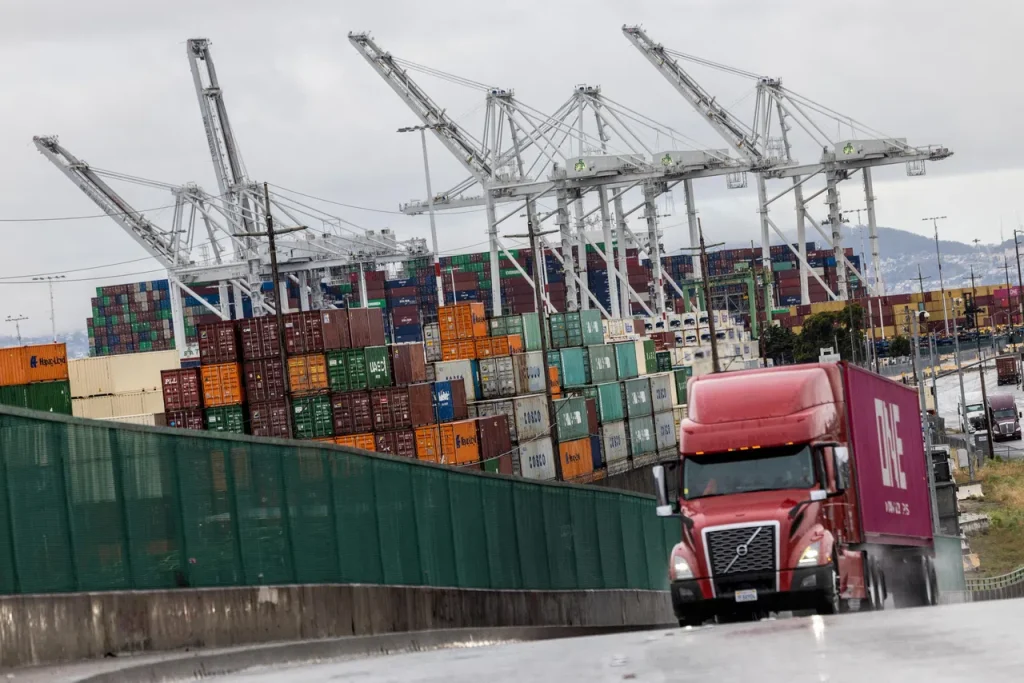[BEIJING] Chinese exports rose less than expected last month as the worst drop in shipments to the US in more than five years counteracted strong demand from other markets.
Exports rose almost 5 per cent from a year ago to US$316 billion in May, slower than economists’ forecast of 6 per cent growth. Despite record exports so far this year, the slump in US demand may have been one factor in convincing Beijing to sit down with US President Donald Trump’s trade negotiators in Geneva and agree to a tariff truce.
China’s exports to the US fell 34.4 per cent, according to Bloomberg News calculations, the most since February 2020, when the first wave of the pandemic shut down the Chinese economy. That was despite the agreement reached on May 12 that gave temporary relief to imports from China that would have faced as much as 145 per cent duties.
That sharp decline offset a 11 per cent rise in exports to other countries, showing the heft of the world’s largest economy even as Beijing reduced its reliance on direct shipments to the market after Trump’s first term.
The benchmark CSI 300 Index for onshore stocks pared gains after the release and was up 0.2 per cent at the lunch break.
“The trade outlook remains highly uncertain at this stage,” said Zhiwei Zhang, chief economist at Pinpoint Asset Management. He added that frontloading should help sustain export momention in June but may fade in the coming months.
BT in your inbox

Start and end each day with the latest news stories and analyses delivered straight to your inbox.
Shipments to Vietnam jumped 22 per cent, rising above US$17 billion for the third straight month as Chinese companies continued to ship through third countries to try to avoid US tariffs. However, that flow is pushing up the US trade deficit with Vietnam and other nations, further complicating negotiations with the US about their own tariffs.
The data showed a recovery in shipments of rare earth elements, which have become one of the key points of US-China contention.
Earlier this year China imposed an export license requirement on some of the elements and products such as magnets, radically slowing down shipments and forcing manufacturers globally to halt some production lines. Beijing’s grip on these exports will be top of the agenda when trade negotiators meet in London for talks later on Monday (Jun 9).
Weak Chinese demand
Imports fell 3.4 per cent for a third straight month of declines, leaving a trade surplus of US$103 billion, according to official data released on Monday.
The weakness of the Chinese economy was underscored earlier with the release of inflation data showing the country continued to be in deflation in May. Factory prices fell for a 32nd straight month, while consumer prices also declined from last year.
Still, the overall growth in exports will continue to support the economy, with the record trade surplus of almost half a trillion US dollars so far in 2025 a boost to companies facing weak demand at home. In the second half of the year, however, China could face a drag on growth should risks to global trade materialise.
The US is threatening to raise tariffs on many countries from early July and on China from August. That could further slash demand for Chinese products destined directly for the US and also used as inputs into other nations’ manufactured goods.
Even if China and other nations are able to strike a deal with the Trump administration, demand from the US and elsewhere might still weaken as companies slow down their frantic purchasing aimed at beating the tariffs. BLOOMBERG


